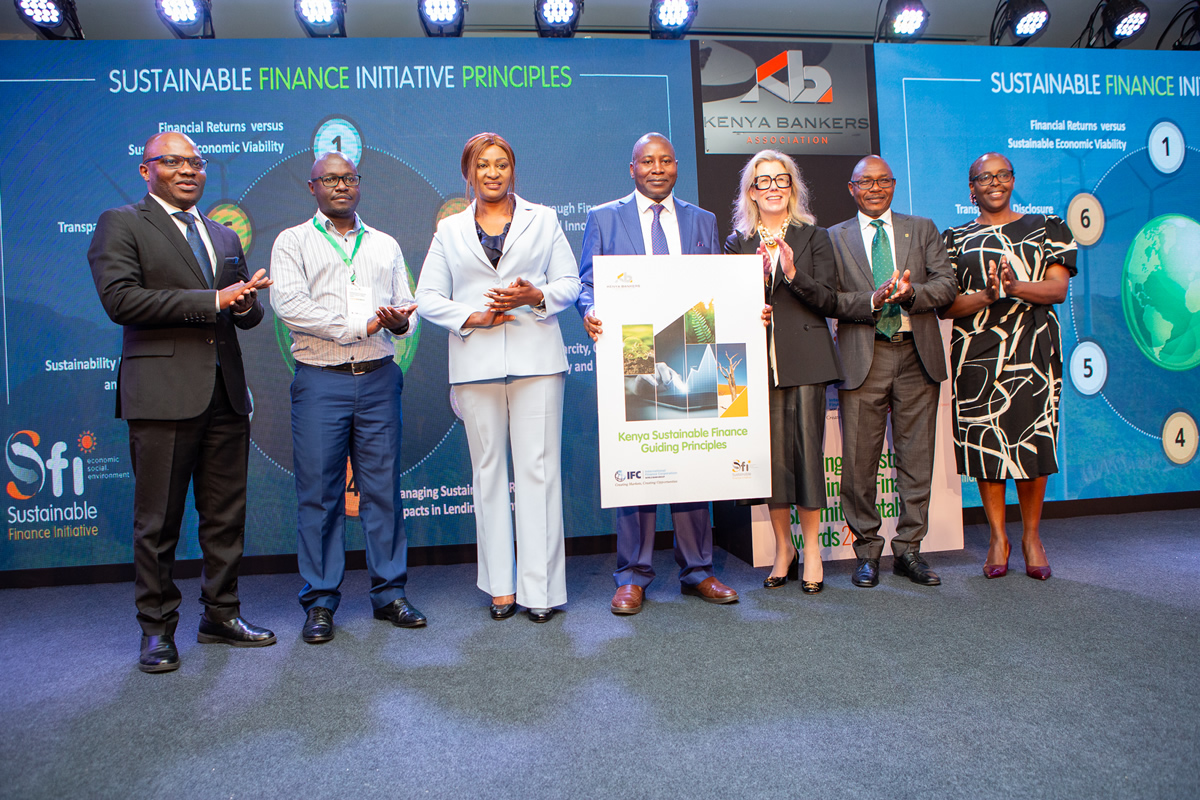- Digital Preparedness Cited Among Factors Aiding The Banking Industry To Weather COVID-19 Disruption
- Despite Deteriorating Asset Quality, Banks Remain Adequately Capitalized To Navigate Shocks Without Triggering Financial System Instability
- Banking Industry Total Assets Continued To Grow At 9.2 Percent In 2019, Driven By Private Sector Credit Expansion
Nairobi 25th August 2020 – The banking industry is poised to withstand market shocks induced by the Coronavirus disease (COVID-19) pandemic even as the economy grapples with a market environment characterized by constrained supply and demand. According to the Kenya Bankers Association’s (KBA) State of the Banking Industry (SBI) Report 2020, banks are sufficiently capitalized to weather shocks arising from the prevailing economic slowdown without triggering instability in the financial system.
The newly released KBA report, whose findings are based on a comprehensive assessment of the banking industry’s performance over the past 16 years with a focus on the year ending 2019, further indicates that the banking system’s assets continued to record a modest growth, supported by an increase in private sector credit growth.
“The implication of the capital sufficiency with adequate buffers that carried over from 2019 into 2020 means that the banking industry, which demonstrably dominates the Kenyan financial system, has remained a key line of defense in the economy when it comes to responding to the current economic slowdown,” said KBA Chief Executive Officer Dr. Habil Olaka, adding that the industry’s heavy investment on digital infrastructure in recent years is one of the key factors that enabled banks to quickly switch when faced by the COVID-19 disruption to a digital-first banking model for both retail and commercial clients.
“Banks have remained open and continue to serve, as such, business continuity has been assured,” he said. “The banking industry has walked step by step with clients, restructuring in excess of Sh840 billion (up from Sh360 billion in June), which is a remarkable demonstration of the industry’s ability to anchor the economy over the short to medium term.”
According to the report, as at the end of 2019, the industry’s total assets stood at Sh. 4.8 trillion out of which loans and advances accounted for Sh. 2.7 trillion. Although the industry’s assets continued to increase, the expansion was slow (9.2 percent), partly on account of the persistent rise in non-performing loans (NPLs).
“Non-performing loans remain elevated at double digits as a share of gross loans,” the report indicates. NPLs as a proportion of gross loans have been growing over the past four years, recording 9.4 percent in 2016 and crossing the double-digit mark in 2017 at 12.3 percent and increasing marginally to 12.7 percent and 12.6 percent at the end of 2018 and 2019, respectively. Currently, NPLs stand at approximately 13 percent compared to the 4.4 percent to 8 percent range that was witnessed during the 2009 to 2013 period.
The increase in gross non-performing loans over the years is mainly attributable to challenges in the business environment that led to cash flow constraints for borrowers. The persistent drought and inclement weather experienced over the report period further affected key sectors, including agriculture and local manufacturing. Despite the portfolio quality trend, the State of the Banking Industry’s 2020 outlook suggests that the industry is well positioned with significant opportunities for banks to improve on efficiency.
Report Highlights
- – There is an obvious focus on the banking industry as it is at the center of the promise of the economy’s recovery from the current shock that has revealed itself in subdued growth. Despite conditions that have affected balance sheet growth and asset quality, the Kenyan banking system remains sufficiently capitalized and able to absorb market shocks.
- – Capital sufficiency with adequate buffers imply that the banking industry, which demonstrably dominates the Kenyan financial system, has remained a key line of defense in the economy when it comes to responding to the current economic slowdown.
- – As the banking industry continues to enhance its efficient operating model and seek economies of scale, individual market players are navigating the increasingly competitive market environment through innovative operations.
- – While the regulatory environment seeks to safeguard sustained stability, customer expectations that are progressively becoming sophisticated, implying that the challenge to the industry is to invest resources in remaining at the frontier of both regulatory and customer expectations.
- – Despite the banking industry resilience, in light of the asset quality deterioration, banks going forward will likely take a conservative view regarding credit expansion, and thus the limited growth momentum will be from the private sector credit.
About the Kenya Bankers Association:
KBA (www.kba.co.ke) was founded on 16th July 1962. Today, KBA is the financial sector’s leading advocacy group and banking industry umbrella body that represents total assets in excess of USD 40 billion. KBA has evolved and broadened its function to include advocacy on behalf of the banking industry, and championing financial sector development through strategic projects such as the launch of the industry’s first P2P digital payments platform PesaLink. In line with the Government’s policy on public-private partnerships, KBA and Central Bank of Kenya have implemented key projects such as modernization of the National Payments System through the Automated Clearing House, implementing the Real Time Gross Settlement System (RTGS), and the Kenya Credit Information Sharing Initiative. The KBA members are comprised of commercial banks and deposit taking microfinance banks.
For more information
visit www.kba.co.ke or contact KBA Director of Communications and Public Affairs, Nuru Mugambi Email: Nmugambi@kba.co.ke


